
views
X
Research source
Knowing how to perform them properly will help you decide where they fit into your routine.
Executing a Jumping Jack
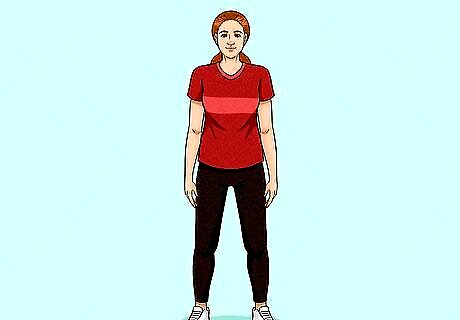
Stand up straight, hold your arms at your sides, and stand with your feet shoulder-width apart. Relax your shoulders back and down along your spine. Keep the natural curve of your neck by relaxing your jaw too. Hold the top of your head up and directly between the tops of your shoulders. Keep your hips over your heels and relax your pelvis. From an upright, standing position widen your stance so that your feet are below your shoulders. Keep your arms beside your body and relaxed.
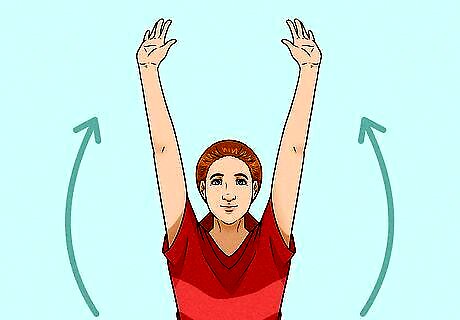
Jump and extend your arms overhead. With your feet shoulder width apart, slightly bend your knees so you can hop. As you hop, or jump just a few inches off the ground, lift your arms overhead until your hands are about shoulder width apart.

Extend your legs. As you jump, open your legs wider than shoulder width as you lift your arms overhead. Give or take some space depending on your height and leave a wide amount of space between your feet. Slightly bend your joints throughout the entire movement. To avoid injury, keep your joints loose. Don’t hold your arms stick-straight, but keep them slightly bent. The same goes for your knees.
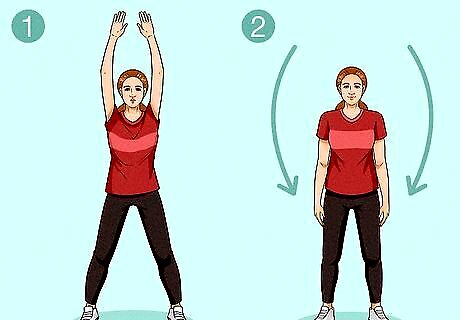
Land in the starting position. After jumping in the air, gently land in the first position with arms at your sides and feet shoulder width apart.
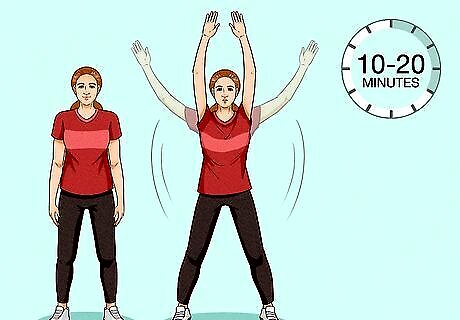
Repeat as needed. You won’t get much benefit out of performing one jumping jack. Use them as a way to warm up before a more intense workout, or as a cardio workout itself. Repeat for 10 to 20 minutes depending on your level of fitness. Perform jumping jacks as a quick five minute warm-up if you're new to working out. Jump longer to get your heart rate up during a warm-up if you're used to cardio work. A jumping jack warm-up may feel like a workout itself if you're not especially fit. That's okay. Keep practicing them daily.
Varying Jumping Jacks

Perform half jacks. Rotator cuff injuries have been reported from consistently doing jumping jacks over time. To avoid injury, perform half jacks, which are done the same as regular jumping jacks, but don’t bring your arms all the way overhead. Only lift them to shoulder height and bring them back down.
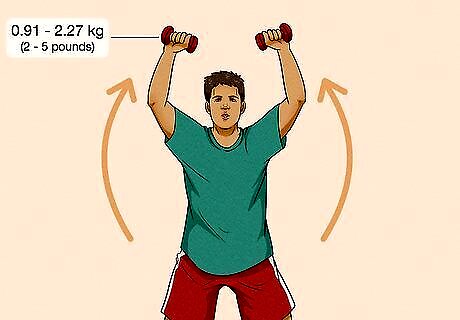
Hold dumbbells. To really feel the burn of a jumping jack routine, hold dumbbells while you perform them. Pick weights between 2 to 5 pounds (0.91 to 2.27 kg), because it will be hard to jump holding anything much heavier. Pick a weight that makes your body work harder, while not messing up your jumping jack form.
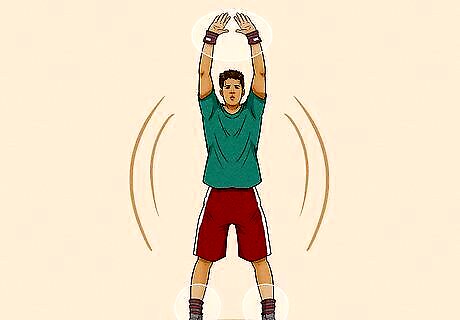
Wear wrist and ankle weights. Make sure you have mastered a proper jumping jack before amping up the intensity with wrist and ankle weights. Keep their weight similar to what you would use for dumbbells and perform jumping jacks slower with them on.
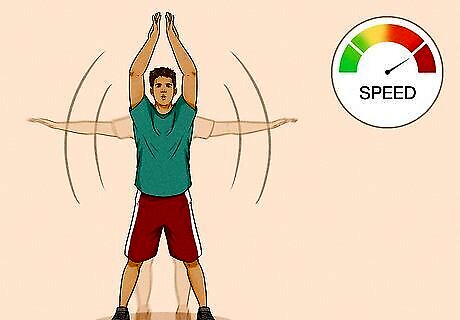
Increase your speed. To get more out of a jumping jack routine, try to perform them as quickly as possible. As soon as you land back on the ground, jump right back up.
Stretching Afterwards
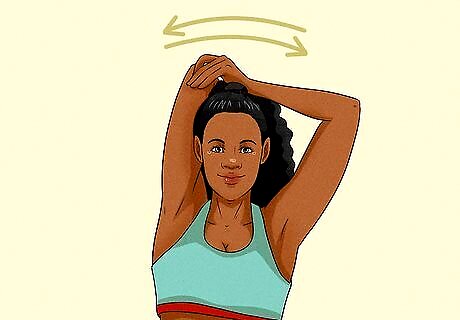
Stretch your shoulders. Stretching is important in any exercise to avoid injury. Begin with a light shoulder stretch to gently start cooling down your muscles. Hold your back up straight and bring one arm overhead. Bend this arm down at the elbow and use your other hand to grab this same elbow. Gently pull it towards the opposite side. Stretch after you have done jumping jacks, so that your muscles are warmed up. Otherwise you risk injury.
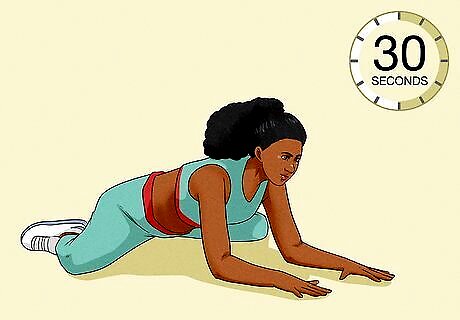
Open your hips. Your hip flexors are one of the main muscles worked in jumping jacks. To open them up before working them, place yourself in a position with hands and knees touching the ground. Slowly move your knees away from each other, while simultaneously walking your hands forward. Hold the stretch for 30 seconds at a comfortable point. Prop your hands up on pillows or books if you need to.

Stretch your quadriceps. Stretch another important area involved in jumping jacks by loosening up your leg muscle above the knee. Stand up straight and bend one knee backwards towards your butt. With your hand from the same side, grab the bent leg’s ankle or toes and push your foot as close to your butt as possible.
















Comments
0 comment